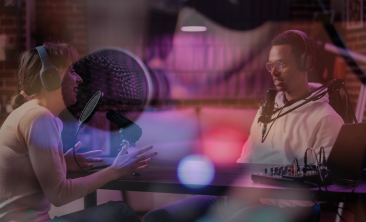5 easy ways to create narrative images
5 easy ways to create narrative images https://www.visualstorytell.com/wp-content/uploads/2017/03/narrative_images_thumb.jpg 369 217 Shlomi Ron Shlomi Ron https://secure.gravatar.com/avatar/995c0cf093380b90c7704fda398c9addf4e5c605afbc92af5c3f01f67d65aa41?s=96&d=mm&r=g

How do you read this photo?
Before we get to the backstory, this image offers an excellent example to demonstrate how our “visual storytelling mind” works. Images are today’s lingua franca of visual communications. According to Hootsuite, “Instagram users have shared over 40 billion photos to date and share an average of 95 million photos and videos per day.” So knowing how to create images with compelling narratives is crucial to stand out from the crowd.
We naturally look at static photos in the present time and see them as time capsules of an event that took place in the past. According to Storytelling Advertising – a Visual Marketing Analysis by Sarah Elise Väre, there are four types of storytelling pictures:
“The past group shows the ending of a story, the present group the middle, and the future group the beginning. The all-tenses group shows both the beginning, the middle, and the end of a story.”
However, not all photos are so clear cut like the one we see above.
Since we are constant seekers of meanings, we’re all players in our movies where we play the hero, the director, the cameraman, and most importantly the editor – then we edit what we see to create meanings that fit with our internal narratives and beliefs.
Such editing work could play with the narrative timeline back and forth until landing on a story we find personally meaningful. Here is how it could be played out, by labeling this image:

a) The Past Group
Because it represents late afternoon capture, showing the workers resting after a long and eventful day of working on the bridge > a resolution of the story.

b) The Present Group
Because the photo was taken in the morning, the workers just woke up a half hour ago (the past), judging by the Oats box on the rail and one of the workers with a towel on his shoulder. They stopped for a quick photo before leaving for another day of work (the future).

c) The Future Group
Because this image simply shows the beginning of their one-hour mid-day break. That’s why you see one of the workers holding his tools and another playing with his cat. They’ve got 10 minutes left before getting back to work where one of them will be reassigned to another role he’d hate (conflict or story middle), but working with his new mates will result in acceptance (resolution > future).
And now that we individually covered each tense, you could imagine how an all-tenses picture would look like, by extenuating the narrative clues into a coherent visual event, almost like in a comic strip experience.
What story do you see in this photo?
As for the larger backstory? Oh yes, I took this photo while touring the small museum on Pigeon Key, FL, which is part of the scenic Florida Keys. Back in 1910, Pigeon Key, FL (size: only 5 acres) hosted 400 workers who were building the Key West Railroad extension – 8th wonder of the world – on $1.5 a day. Work on the line started in 1905 and it operated from 1912 to 1935, when a part of the bridge was destroyed by a hurricane. Henry Flagler financed the entire project for $50M.
In summary, you can follow these five easy steps to create compelling narrative images. Just to caveat, the narrative images we’re talking about are ideally those you plan vs. the ones you spontaneously take as they allow you more control:
1) Plan your story
Come up with the story (setting, conflict, and resolution) your audience truly cares about.
2) Select your storytelling picture type
As outlined above there are 4 types of narrative pictures, select the one you want to focus on and emphasize 1-2 narrative clues (e.g., time of day, salient accessories, the interaction between characters shown, etc.) that will help your viewers conjure the right story.
3) Add captions and hashtags
There are 2 types of captions: a) Descriptive: Where the caption describes what happens in the image and b) Inferential: Where the caption uses the image as a springboard to convey a larger single idea. On VSI’s Instagram, I typically use the latter as it allows us to vividly amplify the power of the visual to support a larger visual storytelling principle we’re looking to relay. Lastly, research what hashtags resonate the most with your audience along with what top influencers in your space are using – and integrate them into the caption’s second half. Leave your opening caption without hashtags so it’s easy to read.
4) Select your target emotion
According to Fractl’s study “The Role of Emotions in Viral Content,” the most impactful recipes include:
- Positive emotions along with surprise were found to result in massive shares
- Pair ‘low-arousal’ emotions (sadness, relaxation, and depression) with admiration or surprise
- Play up high-arousal emotions (anxiety, anger, and excitement) in unsurprising, negative content.
Learn more about the role of emotions in visual storytelling.
5) Test your photo
Create several executions of your picture and test them with your colleagues. You’ll often discover that the story you had in mind may be a bit different, which means you need to further amplify your narrative clues.
More about What Makes a Photo Tell a Story? Check out my conversation with Jaime Permuth, an award-winning photographer, on the Visual Storytelling Today podcast.
Need help developing effective narrative images in support of your visual storytelling strategy?
Awesome! To keep it easy, book time on my calendar.
- Posted In:
- Images
- Story Visualizing
- Visual Storytelling
Shlomi Ron
Shlomi Ron is the founder and CEO of the Visual Storytelling Institute, a Miami-based think tank with a mission to bring the gospel of visual storytelling from the world of art to more human-centric and purpose-driven marketing. A digital marketing veteran with over 20 years of experience working both on the agency and brand sides for Fortune 100/500 brands such as Nokia, IBM, and American Express. He started VSI to combine his marketing expertise with his passion for visual stories stemming from his interests in classic Italian cinema and managing the estate of video art pioneer, Buky Schwartz. At VSI, he helps brands rise above the communication noise through visual storytelling consulting, training, and thought leadership. Select clients include Estée Lauder, Microsoft, and Cable & Wireless – to name a few. He currently teaches Brand Storytelling at the University of Miami’s Business School. Thought leader and speaker at key marketing conferences. He is also the host of the Visual Storytelling Today podcast, which ranks in the top 10 best business storytelling podcasts on the Web. His book: Total Acuity: Tales with Marketing Morals to Help You Create Richer Visual Brand Stories. Outside work, he is a nascent bread baker, The Moth fan, and longtime fedora wearer likely to jive with his classic Italian cinema interest.
All stories by: Shlomi RonYou might also like
7 comments
This site uses Akismet to reduce spam. Learn how your comment data is processed.





Leave a Reply